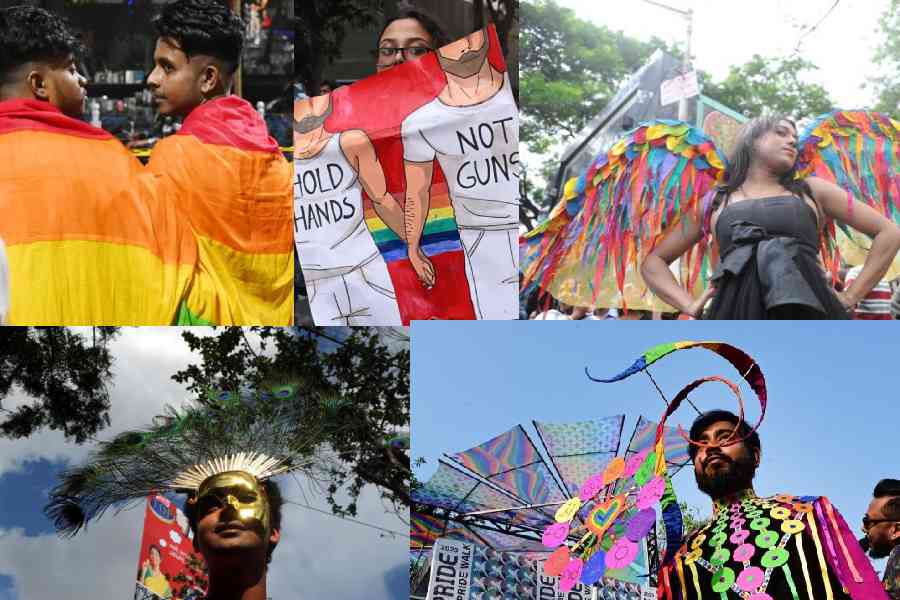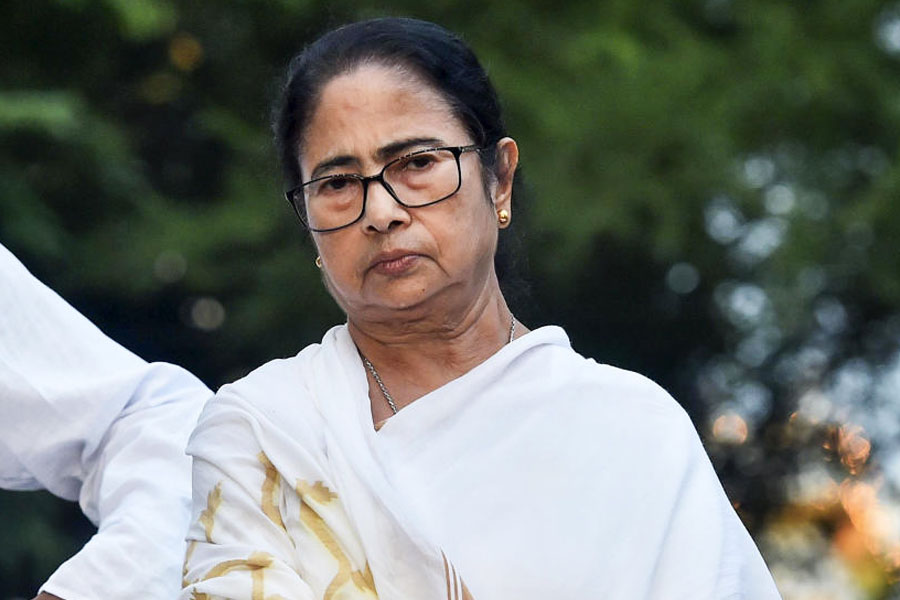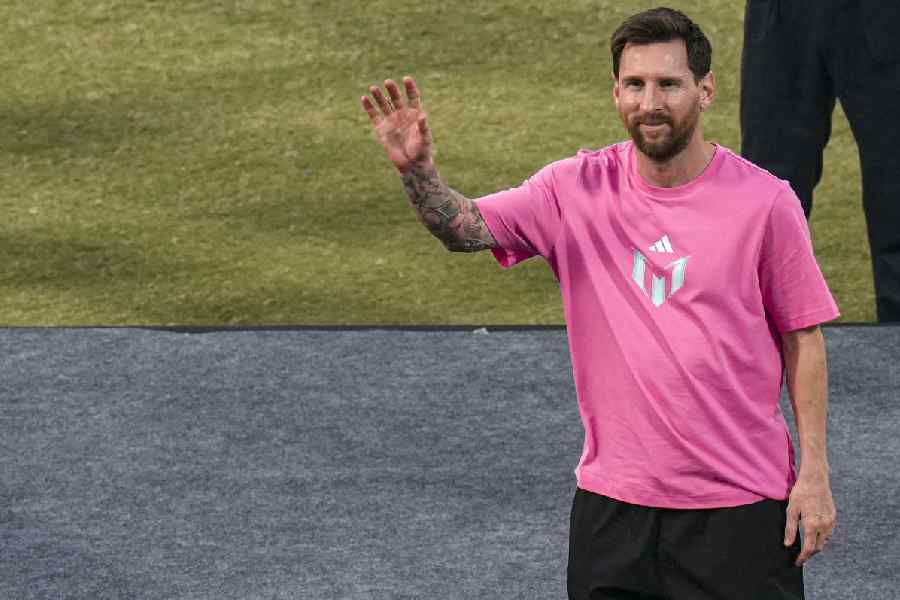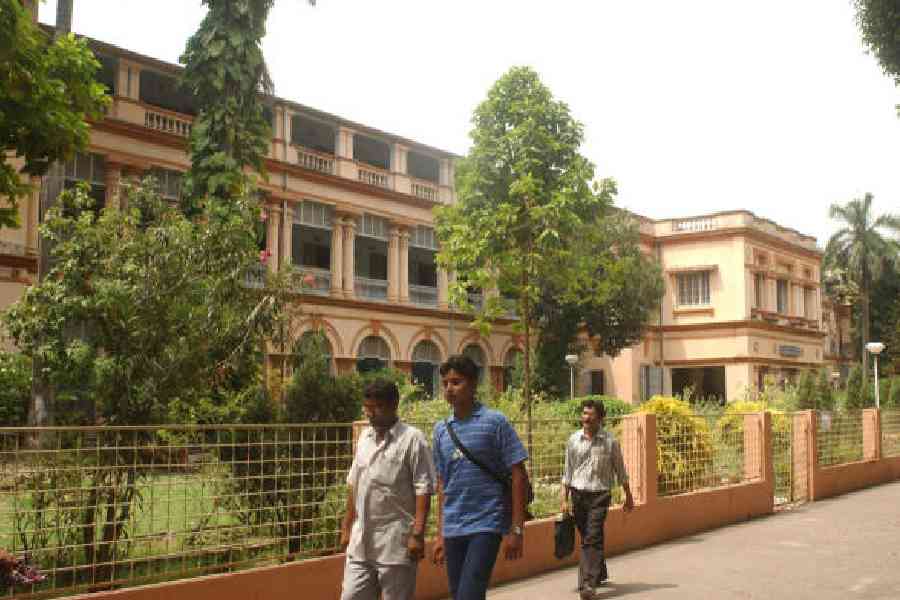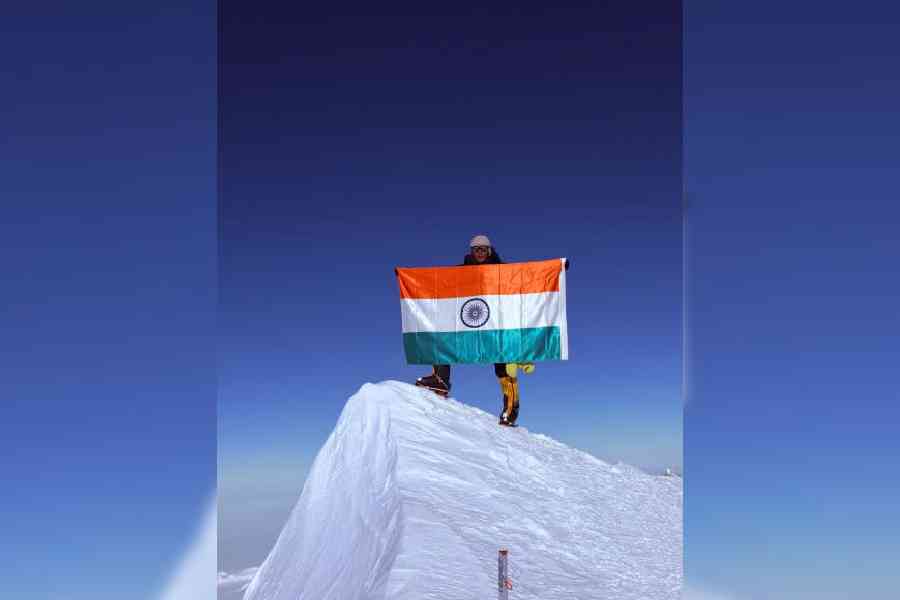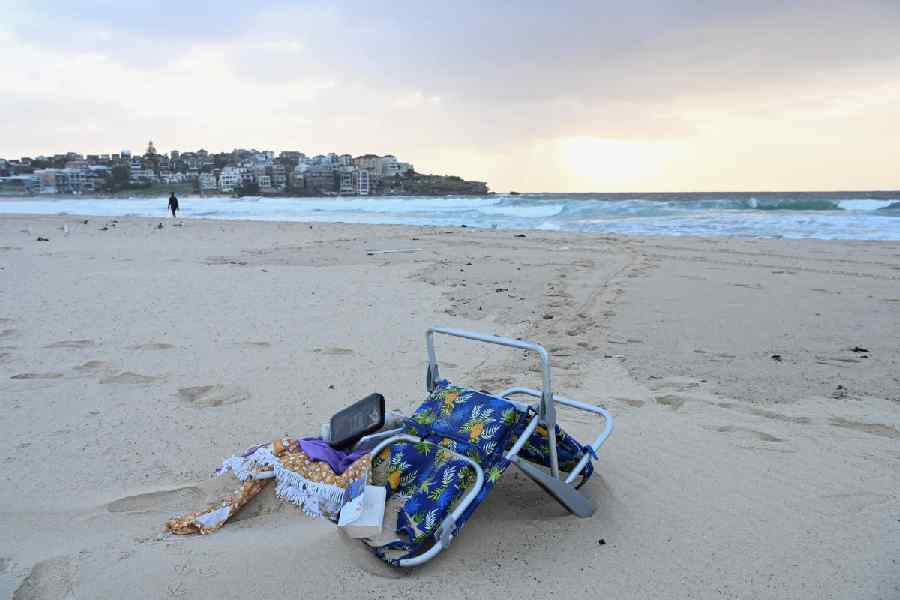June, once a riot of rainbows, feels quieter this year.
Global brands — the same ones that not so long ago splashed Pride flags across storefronts, logos, and cereal boxes — seem to have hit the brakes in 2025. In part, it’s political: Trump’s return to power in the US has brought with it sweeping anti-trans legislation, funding cuts to queer health programmes, and a resurgence of coded conservatism. Companies, terrified of alienating their “core base”, have retreated into the shadows. Rainbow-washing — the annual marketing blitz that made queerness palatable but never permanent — is now bad for business.
In some ways, it’s a relief. We’re spared the awkward parades of glittered capitalism — banks telling us to ‘be proud’ while denying queer couples joint accounts. No more limited-edition Pride crisps from brands that won’t pay drag queens fairly. But the silence feels sinister too. When the flags disappear, so do the promises. The truth becomes harder to ignore: For most people, queerness is still a seasonal accessory. Something to click, share, perform. Not something to understand, centre, or defend.
This global cooling of allyship is being felt everywhere — from West Hollywood to Mumbai. But what about here, in the city I call home?
Calcutta has long fancied itself as progressive, arty, culturally liberal. A city of painters and poets, where Tagore wrote of love that defied gender, and Rituparno Ghosh walked film sets in kohl and gold.
But what does this mean for queer people living here today — trying to date, rent flats, file complaints, walk the streets safely?
It was late October, and a friend had just come out of a date at a cosy cafe in Hindustan Park. The sun was mellow, the sky filtered through amaltas trees, and the conversation had been wonderful — soft, exploratory, filled with that quiet thrill of familiarity when two queer people find shared ground. They hugged goodbye outside the cafew, a quick lean-in, a peck on the cheek. Nothing dramatic. But as they turned to leave, they saw an elderly gentleman on the adjacent bench stare, disapprovingly, for far too long. Then he muttered something under his breath: “Bokami, joto shob!” Foolishness.
They had done nothing illegal, nothing loud. Yet they felt that old flush of shame creep up their neck. Not because they were ashamed, but because they had been seen. And in Calcutta, like other cities, visibility is a fickle thing — a promise and a punishment.
Queer people born and brought up in this city — the city of poets and painters, of marble corridors and metro rush hours, of Chapal Bhaduri and Memories in March — have often felt both held and hurt by it. Held in its leafy familiarity, its cultural excess, its academic liberalism. And hurt by the silences. The inquisitive stares. The flat refusals at flats. The “we don’t want trouble” syndrome.
So I decided to ask the question that many of us tiptoe around but never really answer:
Is Calcutta truly queer-friendly — or just aesthetically so?
The Dating Dance: Between Risk and Romance
For queer people in Calcutta, dating is often not just about chemistry — it’s about choreography. A delicate negotiation of public space, perception, and personal safety. One misstep — a hand lingering too long, a glance that lasts a second too much — and the atmosphere can shift from electric to perilous. Unlike the casual, often taken-for-granted visibility afforded to heterosexual couples, queer intimacy in Calcutta frequently comes with an invisible asterisk: express with caution.
Tulip, a queer woman in her 30s and practising lawyer, underscores this paradox. “In South Calcutta and Salt Lake, it’s easier to exist, to date, to go out without being heckled. I’ve kissed my partner at Lords and Barons and no one blinked,” she shares. These zones — cosmopolitan, upper-middle-class enclaves — offer a limited version of freedom, mediated by class, language, and appearance. Yet the threat isn’t eradicated, it merely shifts.

The legendary Rituparno Ghosh and Deepti Naval in Memories in March
“Past 9, I was walking with my partner in Maidan and two men on a bike stopped and shouted ‘lesbians!’ and left. In Park Circus, Dumdum, Motijheel areas, I have had several friends face gazes and comments,” she says. These neighbourhoods, deemed “less liberal” by popular urban myth, often reflect deeper systemic divides — of class, religion, and caste — which intertwine with queer safety in complex ways. The city becomes a patchwork of zones: some where queerness can breathe, others where it must brace itself.
In a different Calcutta — the one before dating apps, before rainbow-filtered Instagram and identity vocabulary — queerness unfolded through shadows and subtext. Aditya Mohnot, 49, now with the queer archive and support collective Bonbibi, recalls a pre-digital intimacy rooted in anonymity. “In the late ’90s, we didn’t even use the word ‘gay’. We were men who had sex with men, and often didn’t know each other’s real names. But the interactions were real. We had fixed spots.”
These were not just spaces for sex — they were acts of resistance. Hidden yet accessible, they allowed fleeting moments of connection, even desire, under the constant threat of police raids or public humiliation. “Then came Ginger, Sams, and Club 7,” Aditya continues. “The Internet helped, yes, but with visibility came erasure too. Many queer people who never wore the label have kind of disappeared.”
His observation touches on an important contradiction in the modern queer experience — with labels, dating apps, and digital visibility, some found community, but many others faded away, unaccounted for by a mainstream narrative that often centres on urban, English-speaking, gay men.
Dating, then, is not just about preference or identity. In Calcutta, it becomes a question of access. Who gets to love openly? Who gets to swipe without fear? Who gets to be seen and yet stay safe?
The answers are rarely simple. But every queer kiss in a public bar, every cautious glance on the metro, every anonymous rendezvous in a park — they’re not just about desire. They’re about negotiation, courage, and survival.
Pride Flags and Real Inclusion: Where Are the Truly Safe Spaces?
Calcutta, the first South Asian city to host a Pride Walk in 1999, is often hailed as a symbol of queer visibility. In certain enclaves, you’ll spot rainbow flags on cafe windows, queer-themed poetry nights, and same-sex couples sharing public space without immediate fear. But beneath the surface of this curated inclusivity lies a complicated truth — these pockets of acceptance are often narrow, catering to a particular kind of queerness: urban, upper-middle-class, English-speaking and largely cisgender.
For those who don’t neatly fit this image, the city’s ‘inclusive’ spaces can feel like tightly policed performances. Trans rights activist Anindya Hajra, who has been at the forefront of Calcutta’s queer movement for decades, reflects on how exclusion still persists in places that claim to be progressive.
“The idea of a queer-friendly space is relatively recent — and limited to declared zones like cafes or bookstores. But that doesn’t automatically make them warm or safe. Many of these spaces operate on unspoken assumptions — about how someone should look, dress, speak, or spend. A visibly trans or queer person from a working-class background often isn’t made to feel like they belong. I’ve been stopped at nightclub entrances, questioned just because I didn’t fit their image of a desirable guest,” says Anindya.
Even in hip neighbourhoods like Hindustan Park, where Anindya lives, the presence of visibly queer people — especially alone and not coupled up — is rare. Hangout spots here, often built around aesthetic coupledom, make little room for solitary queerness or non-conforming identities. Misgendering by staff is common, not necessarily from hostility but from a lack of training or awareness.
“I rarely see solo queer or trans folks just sitting quietly in cafés. It’s always two people, two coffees, a pair. These spaces aren’t built for difference; they’re built for sameness. And if the staff still misgender you, if you’re stared at or ignored, then that rainbow sticker on the door is just decor. It doesn’t mean safety. It doesn’t mean inclusion,” adds Anindya. After they were denied entry in nightclubs and other queer individuals facing the same, Pink Party was founded as a nightlife initiative that sought to carve out space for queer joy without gatekeeping. It was born out of necessity, not novelty. Because while Calcutta may celebrate queerness in theory, the work of making spaces truly inclusive — across caste, class, gender identity and expression — is still unfinished.
Housing: The Closet, Repackaged in Rent Agreements
If dating feels tricky, apartment-hunting as a queer person in Calcutta is a masterclass in deception, sometimes. And yet, for some, things are shifting. Manjima Mukherjee, a 22-year-old political science student who moved to the city three years ago, shares, “I think I’ve been really fortunate. Even though I look visibly queer, I’ve never faced comments about my identity — not even back in Bardhaman, where I grew up.”
For younger queer individuals, the journey today can feel a little less fraught than it was for those who came before. Decades of resistance, organising, and visibility have cleared small paths. The older generations walked so the next could run — and while the sprint may still be some way off, the pace is definitely picking up.
“I’ve pretended my partner is my cousin more times than I can count,” says Archee Roy, 36, a queer Dalit visual artist. “Back in 2012, when I lived with my partner, we couldn’t tell landlords we were a couple. We had to pretend to be friends. There was always scrutiny — people calling us ‘sisters’, neighbours watching too closely. I remember waking up at 4.30am to fetch water because we couldn’t afford a filter, and one of the tenants asked, ‘Where’s your sister?’ I had to play along. I didn’t have the courage to correct them then. Today, I would. Today, I say — this is my partner, don’t dare to call her anything else. Things have changed. I now live in my partner’s family home in South Calcutta. They don’t question our relationship — we’re older, economically independent, and perhaps that brings a certain protection. But I recognise that’s a privilege.”
The scrutiny intensifies if you’re visibly gender non-conforming. “If you’re visibly queer — short hair, accessories, coloured hair — people assume you’re either dangerous or perverse. And that’s when you get evicted, not just judged,” adds Archee.
Even posh areas like Ballygunge or Alipore aren’t immune to this. “They’re liberal only till your lease is signed,” says Sandeepta Das, an IT professional who identifies as a trans woman. “While residing in a place like Bhowanipore, my family and friends are constantly concerned when I visit some malls. The crowd there are unaware, the scrutiny very hard. I choose to wear loose clothes and dress ‘safe’ whenever I head to these places. It was also tough for me to land a place to live in and I don’t think that was because I’m queer but it came from being a single woman. I remember one homeowner asked to meet my parents in order to lease the apartment when I was 27!” recounts Sandeepta.
Anindya says, “I haven’t lived in rented flats myself, but I know so many trans and gender non-conforming people who’ve struggled to find a place. Many landlords won’t rent to someone who’s visibly queer. The intersections of religious, gender, and class identities make it even harder. What’s worse is you can’t legally fight this — these are private decisions, so the law doesn’t protect you.”
Legal Rights: Theory vs Practice
Post the decriminalisation of Section 377, the LGBTQIA+ community has received legal status but the conversion to societal acceptance seems miles away. While the Kolkata Rainbow Pride Walk has received unwavering support from the Kolkata Police for years now, the system after the performance is not as glossy.
“Filing an FIR as a queer person is still a game of luck,” says Anindya. “If you’re upper-caste, cis-passing, English-speaking — maybe. But if you’re Dalit or trans — good luck even getting your complaint registered.”
Kaunish, founder of the Bengal Trans and Queer Foundation, is a trans man married to a trans woman, Aparna. The couple has a child together. Unlike many heterosexual individuals who may move freely without identification, Kaunish always carries his documents and gender affirmation certificates — an everyday necessity for many trans people navigating hostile or bureaucratic spaces. Though they live in Serampore, Aparna, who identifies as trans and grew up in Calcutta, often travels to the city with Kaunish for their child’s specialised therapies. But public transportation is rarely an option. They’re routinely subjected to hostile stares, whispers, and unsafe conditions. In one harrowing instance, Aparna was nearly pulled out of an auto-rickshaw by a stranger — targeted solely because of the pervasive perception that trans people are easy prey.
Community Violence: The Unspoken Divide
One of the hardest truths of this story is this: the queer community is not a united lot. “There’s so much transphobia from cis gay men. So much caste blindness from upper-class queers,” says Sandeepta. Moreover, in several incidents and our encounters with queer people, we learned that if a queer person went to the authorities to file a complaint against another member from the community, the cops were quick to say, “Your community, your problem”.
Disha Bhattacharya, a 19-year-old pansexual person and Bethune student, says their school years were tough. “I bound my chest with crepe bandages, and one day it opened. I was reprimanded by my teachers and felt embarassed thinking I was caught! When I dressed masculine, I got a lot of backlash and scolding from relatives, teachers but when I embraced my feminity, things changed. The society feels awkward when you don’t dress according to the sex assigned to you at birth and that is disheartening because it should be nobody’s business except yours.”
In one harrowing incident, Meera (name changed on request), a trans woman, was waiting at a Central Calcutta bus stop before her transition when a group of eunuchs began to taunt her. The verbal abuse quickly escalated as nearby men joined in — mocking, yanking her hair, and physically assaulting her in broad daylight. The violence left her deeply shaken, a moment she recalls with lasting trauma.
In another case, a woman who identifies as a lesbian was seated in the women’s section of a public bus when she was confronted by a fellow female passenger. The woman questioned her gender, pointing to her loose clothing and short hair, and demanded she vacate the seat. The confrontation turned into a heated altercation — one that reflects how rigid gender perceptions can render even designated “safe” spaces hostile for queer individuals.
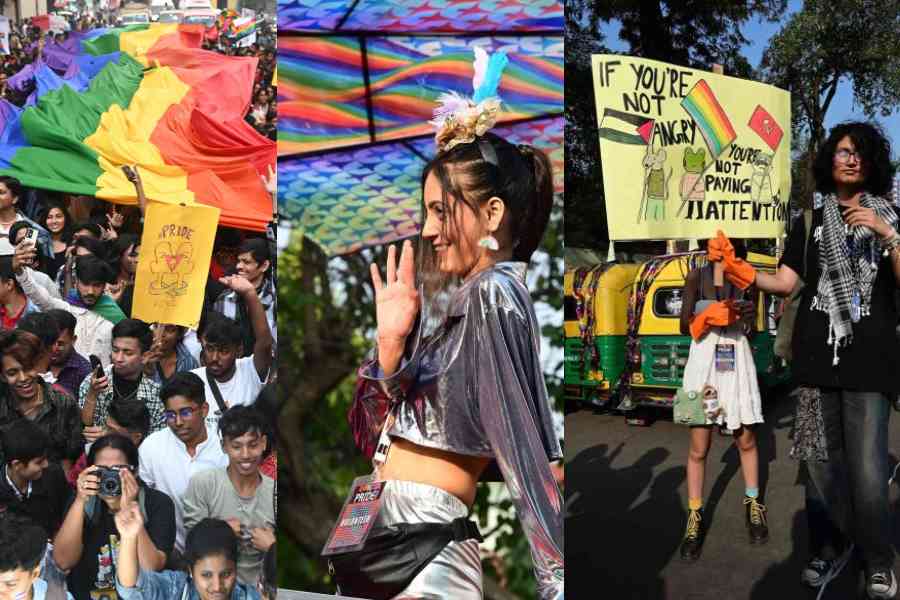
From our interactions, the city emerges as a paradoxical blessing. Calcutta allows room for many identities to breathe, experiment, and express. It offers moments of quiet acceptance and rare joy in a country still learning to embrace queerness. But beneath that surface, fractures remain — of caste, class, gender presentation — that can sometimes wound from within the community itself. And yet, despite its contradictions, the city continues to hold space for resistance, solidarity, and the possibility of something better.
Infrastructure, Or the Lack of It
Calcutta, like most other Indian cities, still has no policy on gender-neutral washrooms in public places. “Even after my transformation, people try to decode me in public—‘Is this person a man or a woman?’ They stare, and the stare says everything. It’s not just curiosity — it’s judgement, sometimes hate. I’ve heard women tell their children, ‘She’s not a real woman, she’s a man’. That happened in South City Mall. I was wearing a simple sleeveless dress, and I still got that comment. It makes you question your existence. It chips away at your self-worth,” says Sandeepta.
Washrooms are a distant concern when basic needs like employment and education are still luxuries for most queer people. A lot of trans folks remain unemployed. Why? Because education gets cut short — often by families who fear their queer child will embrace their identity more if allowed too much freedom. “It happened to me too. Parents aren’t equipped to deal with it, and in rural Bengal, the situation is worse. Many trans women are forced into hijra work or sex work, and often operate from their own homes for safety, which is its own kind of isolation,” adds Sandeepta.
Rahat, (name changed) a queer woman, 27, was once assaulted because they entered a women’s washroom and the women there chose to not believe they were a woman because they were “not dressed feminine enough”. It wasn’t until the club’s security intervened that the brawl stopped.
Nishan Das, 36, photographer, says, “Back in North Calcutta, I notice something particular. It’s not that people are overtly hostile — they’re more curious, inquisitive, sometimes uncomfortably so. It can feel unnerving, the way some people stare, but it’s rarely violent or hateful. I haven’t faced any direct physical threat, and maybe it’s also because I am a cisgender man or I have what people call a very ‘angry face’, which makes folks think twice before approaching. But still, there’s this undercurrent of being watched, of being othered. You don’t always feel free to just… be. Like, if I have to accessorise flamboyantly, I won’t choose to do that unless I’m in a queer space... definitely not on the roads of Dumdum.”
Memory, Legacy, and the Burden of Representation
For many, Calcutta’s Pride Walk once felt like a radical act of visibility — chaotic, colourful, and unapologetically inclusive. “I was 22 when I first attended the Pride Walk in 2013 — it was transformative,” recalls Pranav, 34, digital marketer. “It didn’t even feel like Calcutta — it felt like Rio. Pride then felt raw, real, and deeply representative.” Over the years, however, the event has taken on a more curated, commercial sheen. “Today, it feels dominated by affluent, English-speaking cis gay men. The focus has shifted from rights to brand visibility, and the organising space has become less diverse.” Pranav’s reflection is not just about nostalgia — it signals a deeper anxiety around erasure. As queer activism in Calcutta becomes increasingly palatable to corporate and elite audiences, those at the margins — trans people, working-class queers, and rural voices— risk being sidelined in the very movement they helped shape.
Pranav’s story also hints at a larger conversation of representation. Growing up queer in a rigidly binary world leaves scars that don’t always fade with adulthood. Pranav studied in an Army school in the city’s outskirts (Khardah), and recalls the isolation of believing they were the only queer person alive. Visibility came with a price — name-calling, survivalist mimicry, and internalised shame. “If someone more effeminate than me was being mocked, I had to join in to protect myself,” he admits. That legacy of fear still lingers: they now work remotely to avoid monitoring how they walk, talk, or dress. “Straight people don’t have to think about any of this. That’s the privilege. The privilege of not thinking.” His story is a reminder that representation isn’t just visibility— it’s also a burden, a daily act of translation between survival and authenticity.
Archee also recalls that if at an event they would put up a Sappho stall and approach someone who might be queer, they were immediately asked to not hover around them since the person was with their parents. If a person was even spotted with a queer person, there would be murmurs and possible backlash. This, however, has toned down greatly in the past decade. Whether it is general awareness, indifference or the fear of going viral if you do try and disrespect someone, is unknown.
For three consecutive years, I have frequented the Pride Walk and spoken to numerous attendees only to hear how happy and excited they were to just be themselves without a passerby snickering at them.
Navonil Das, co-founder of Kolkata Pride, says, “Usually in other cities queer groups have to negotiate with the authorities about the size of their flag, but we negotiate the timing and the route, which is Calcutta’s iconic Park Street, and every year since 2018 we have fearlessly marched down the road with permission and pride.”
Social worker and trans person Sudeb Suvana, 46, points out that every district of West Bengal has at least one trans activist group. They also highlight how in different parts of the state, the folk dances differ and interestingly most of these folk dances have trans artistes. They said, “In fact, in one such village, the residents taunt and poke a trans woman in the morning while they touch her feet in the evening when she’s dressed as a deity performing gajon. Also, in Calcutta, we see the acceptance rate to be much higher as compared to Northern India and Bihar.”
“The Bengali art and culture have queer revolutionaries like Rituparno Ghosh. I still remember meeting him and the day he passed was when I realised what we lost. In the past two decades, the conversation has begun and a massive change has been spotted. I work with the employment of trans individuals and the evolution is commendable. We have several feats to achieve but the positive side of our journey till date cannot be denied! If the youth today doesn’t care about another person’s orientation it is because of this journey.”
So… Is Calcutta Queer-Friendly?
The answer, dear reader, is both yes and no. And perhaps it’s neither. The answer lays in the flag itself. Void of black and white.

Drag artiste Zeesh performing at Kitty Su’s The Ultimate Drag Christmas Eve Pink Pride Fundraiser at The Lalit Great Eastern
Calcutta is kinder than Delhi, more artistic than Bangalore, less transactional than Mumbai. It lets you linger. It gives you time. But it also gives you judgment. It gives you freedom in Park Street but fear in the metro. It offers drag shows at a five-star hotel and harassment in a dark alley. It gives you Pride Walks, but not housing rights. Rainbow stickers, but not FIRs. Visibility, but not safety.
Maybe that’s the point. Calcutta isn’t one thing. It’s a city of shadows and shade, poetry and potholes. You can be queer here. You can even thrive. But you’ll have to build your world within it — and know that sometimes, it won’t hold you.
There is no single answer to whether Calcutta is queer-friendly.Because the question itself is complicated, shifting, deeply personal. Maybe the more urgent question is: Can we make it better? And that answer — that responsibility — belongs to all of us.

